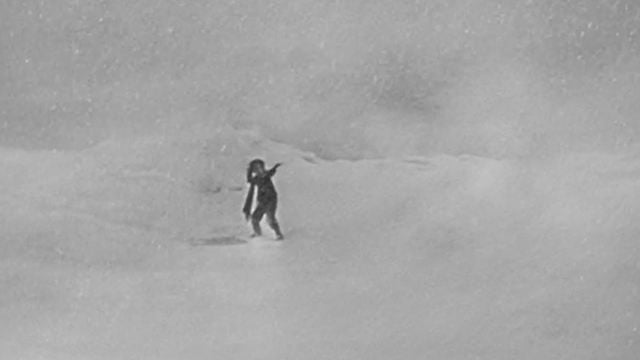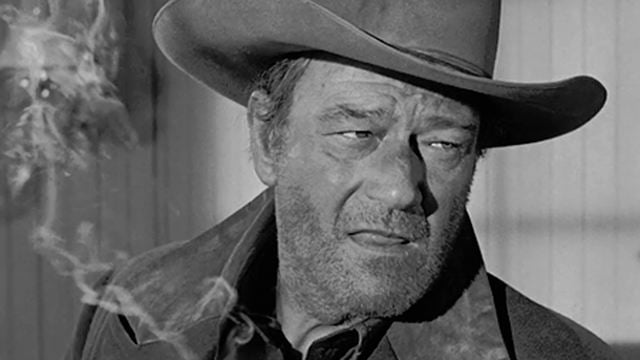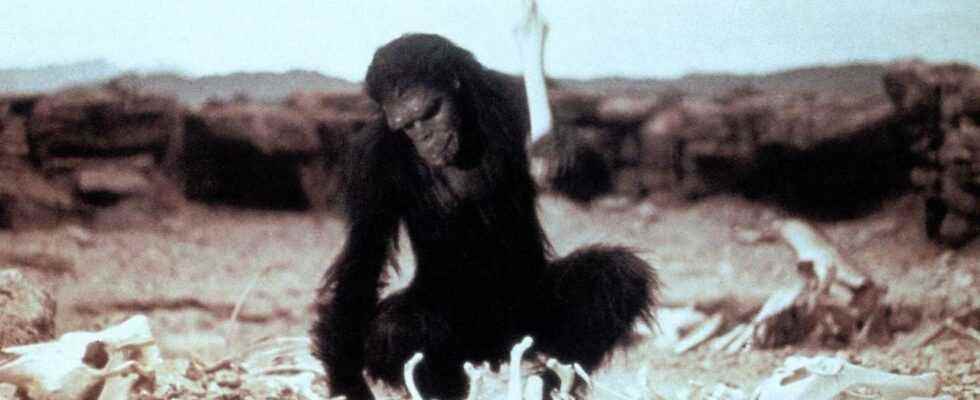Stunning connections, ellipses staged with talent…: these cinema plans left you speechless as they are so well thought out! Here are 10 unforgettable finds from inspired directors.
Almodovar, Kubrick, Welles, Spielberg, Bunuel… To name just a handful. Many filmmakers have given us unforgettable moments of cinema with their works, regularly interspersed with brilliant staging ideas, some of which have left a lasting impression on the retina and our cinephilic memory. Here are ten.
The fitting on the napkin in “Julieta”

Pathé Distribution
Presented in Cannes and in cinemas in May 2016, the latest opus of Pedro Almodóvar had left the Festival empty-handed, not without having marked minds and hearts. Portrait of a woman shattered by the loss of the people who were dearest to her, Julieta plunges into the throes of the most passionate female relationship there is: that of a mother with her daughter and by extension of a woman with her. -even and… the passage of time.
Proof if any of the perfect alchemy existing in the film between the background (full of darkness) and the form (full of meaning), the towel fitting is striking. In one shot, the heroine’s child wipes the wet hair and the ragged face of his depressed mother (Adriana Ugarte) then lifts the towel, revealing features suddenly aged (those of Emma Suarez) by ill-being and time. An effective and devilishly elegant way to underline the damage of depression and the suddenness of aging… which attack without warning.
The sequence in question…
The dramatic mirror in “Contact” by Robert Zemeckis
A young and brilliant astronomer (Jodie Foster) remembers the death of her father when she was just a child. A founding moment for the heroine, brilliantly staged by Robert Zemeckis: the little girl who has just discovered her father collapsed on the floor, runs upstairs to get his medicine. Dramatic music and slow motion on its course already announce the tragedy in progress. Without the slightest cut, what we thought was a simple objective tracking shot appears as a plan that seems to have been entirely shot in the mirror of the medicine cabinet. Bluffing.
If we carefully review the sequence shot, we realize that it was actually reversed 180° in post production, the proof of this is the railing of the staircase on the left in the direction of the descent a few times longer early, and… left again in the uphill direction. The striking mirror effect of the scene is based on a perfect match, with digital retouching that reveals the famous mirror on the left. The purpose of this technical feat? Insist on the reflection of the traumatic, obsessive, crucial memory.
A plan to discover below…
The ellipse in “2001, a space odyssey” by Stanley Kubrick
A hominid throws a bone into the air, which it has managed to master as a tool and even as a weapon. Propelled into the air, the object falls back and “become” a spaceship of similar shape and whose upward trajectory is the same as that of the bone. All to the meaningful music “Thus Spoke Zarathustra” by Richard Strauss followed by “Beautiful Blue Danube” by Johann Strauss.
If we had to remember only one scene from the mythical 2001, the Space Odyssey, it would be this one. In a simple connection, without transition and without breaking the movement in progress, Stanley Kubrick connects two ages very distant from each other: in a real second on the screen, millions of years of -decisive- evolution are suggested. A sumptuous reflection on the time of space and of the species (which has become “master and possessor of nature”)…
Take a look below…
The shock of “An Andalusian dog” by Luis Bunuel
They would not have liked us to analyze even one of the mad plans of their Chien Andalou, they who “amused themselves” for this film with the game of “exquisite corpse”, a “surrealist” exercise consisting in chain all shocking images born of their respective unconscious, without any desire for rationalization. And yet, it is difficult to resist the commentary of this short film, fruit of the unbridled imagination of a Salvador Dali and a Luis Bunuel inspired.
The most striking and unforgettable of this masterpiece? The shots juxtaposing the image of a razor blade splitting an eye and a slender cloud cutting the moon. A connection dreamed up by Luis Buñuel himself, emblematic of the violence and beauty of his first work. A work in which the author stages himself as an actor of sacrilege, a showman of the unshowable, a creator of a poetic reality which tears the veils of perception and shakes the spectator, invited to “see from another eye than usual”. Just that.
The sequence below…
The return to the past of “Citizen Kane” at Orson Welles
Difficult to quote a single plan of this absolute masterpiece of cinema, essential subject of the courses of analysis of the image. And yet. Among the virtuoso sequences (the opening in particular) and the most judicious connections of Citizen Kane, we have chosen to retain the moment of the film which stages a flashback for the first time: the one where Orson Welles reveals the childhood of its hero thanks to a fade to white allowing snow to be superimposed on the narrator’s letter.
As impressive as it is difficult to achieve taking into account the decor, the famous tracking shot that follows gradually leaves Charles in the background, showing his mother first, then the house and the negotiations taking place there. A direct staging (the trolley must avoid the table located in the field) full of meaning, which after having moved the point of view inside the family home, opposes the free universe of the child to the rigid one of adults, frozen because under constraint. The overframing of the little boy (by the window then by the frame itself) judiciously signals his progressive imprisonment.
See below…

The burning match in “Lawrence of Arabia” by David Lean
Six years before 2001, the Space Odyssey and Kubrick, David Lean signs an anthology scene born there also from a connection with very strong symbolism. The charismatic Lawrence of Arabia blows on a match to extinguish it. Cut. A beautiful sunrise looms over the desert.
A pure sequence of two shots joining the infinitely small (the flame) to the infinitely large (the light of the sun), there to underline the megalomania of the character, convinced of being a demiurge, a superman capable of surpassing others and his own condition, by denying his suffering and working miracles.
Be that as it may, this shot, probably one of the most famous in American cinema, deeply marked a young boy promised to a great future: Steven Spielberg.
Here it is again…
The bodies frozen in “Hiroshima mon amour” by Alain Resnais
One of the most beautiful opening sequences of French cinema, all of sweetness and pain mixed together. In Hiroshima mon amour, the embrace is founding which is played out from the first seconds between a man and a woman who have survived the horror. What do Hiroshima lovers look like? Has fragments (because filmed in close shots) of frozen beings, seeming to emerge from a bath of ashes before melting, in sweat.
By linking his disturbing shots in this way, to the strangely unforgettable chords of Georges Delerue and Giovanni Fusco, Alain Resnais underlines the extent to which love has been and will always be tinged with death and the weight of memory, the fusion of damaged bodies recalling fusion (then fission)… nuclear.
A fade as poetic as it is edifying, to review here:
The stretched frame in “Mommy” by Xavier Dolan
Xavier Dolan, from the start, showed how much he knew how to master cinematographic language to convey the most excessive emotions. Of all his films, virtuosos, Mommy is undoubtedly the masterpiece, knowing how to combine the fever of the passionate prodigy and the mastery of the confirmed director. Led by the young Antoine-Olivier Pilon, the key scene of the film is played on the chords of the tube of Oasis, Wonderwall.
In a clipped sequence during which he skateboards in music and in freedom, the young hero (a kind of enraged alter ego of the fiery Dolan) spreads his arms and following his movement, the frame widens from the unusual format chosen for the film (1:1) to that more usual (1:85:1) used by the cinema.
The side black bands which, in addition to oppressing the viewer, have so far expressed the confinement of the characters, disappear with a single gesture, giving air to the decor and its heroes, authorized to believe from then on to a better future. A daring and ingenious beautiful escape, which literally explodes the frames of the staging, as close as possible to the feelings of the characters.
The Wheel of Pain sequence in John Milius’ “Conan the Barbarian”
Another nice way to illustrate the strength of passing time. In Conan the Barbarian, the young man who became a slave after the massacre of his family, finds himself chained, forced for years to turn an enormous wheel known as “of suffering”. He will be the last survivor to move it, becoming at the end of his forced training the invincible hero that we know.
John Milius’ sequence, which connects the shots on Conan’s increasingly muscular legs, has the art of condensing in a few seconds those years of suffering which, after having forged his body and his mind, have made a young boy (Jorge Sanz) a man (Arnold Schwarzenegger), become indestructible with the force of the wrist.
The memory in smoke in John Ford’s “The Man Who Shot Liberty Valance”
At the end of John Ford’s cult film, Doniphon (John Wayne) explains to Ransom Stoddard (James Stewart) that he did not, as he thinks, kill the famous Liberty Valance (Lee Marvin). “Remember,” he adds, facing the dazed gaze of his interlocutor. By spitting out the smoke from his cigarette, Wayne introduces the flashback: the shot becomes blurred before turning black. Black which actually represents his back and which unravels when he gradually advances to the next shot, letting the image appear…
The memory emanates from the smoke, the darkness emanates from Wayne’s body… Two brilliant connections, which express both the evanescent nature of the images that will follow and the dark and dark side of the hero who creates them, by his gesture and by his body. A judicious way for Ford to confer here on Wayne the status of director of memory and therefore of the film, which rests entirely on this past moment… pivotal.
Double coupling, double direction:

